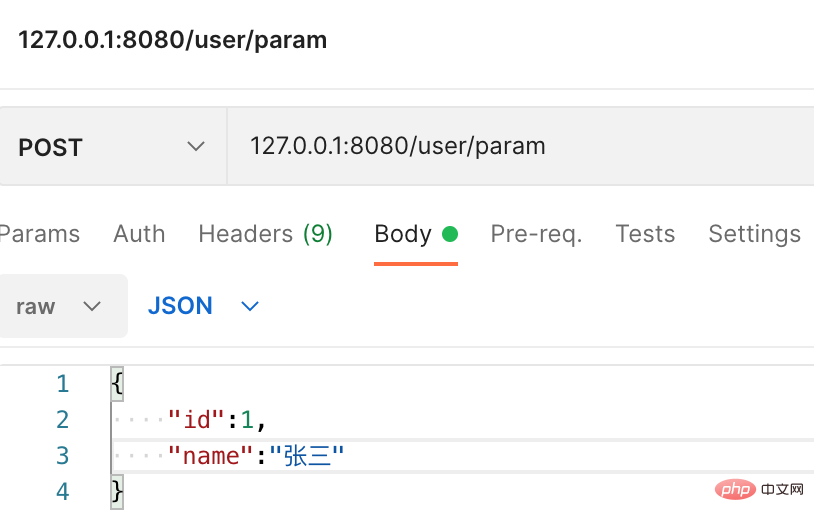Home >Java >javaTutorial >Springboot uses spel combined with aop to realize dynamic parameter transfer
Before starting to write the code, let’s first understand SpEl (Spring Expression Language) expressions, which are a powerful tool in the Spring framework.
Spring can use SpEl to Construct complex expressions, access object properties, call object methods, etc. during runtime.
Give a simple example to facilitate understanding, as follows
//定义了一个表达式 String expressionStr = "1+1"; ExpressionParser parser = new SpelExpressionParser(); Expression expression = parser.parseExpression(expressionStr); Integer val = expression.getValue(Integer.class); System.out.println(expressionStr + "的结果是:" + val);
Through the above cases, it is not difficult to understand, the so-called SpEl is essentially a parsing expression.
If you are interested in SpEl expression, you can check the information by yourself. This article will not discuss it in detail.
Have a brief understanding of SpEl expressions, then we will start coding directly.
First introduce the necessary pom dependencies. In fact, there are only aop dependencies, and SpEl itself is supported by Spring, so No additional introduction is required.
<dependency>
<groupId>org.springframework.boot</groupId>
<artifactId>spring-boot-starter-aop</artifactId>
</dependency>Define a SpEl tool class SpelUtil
public class SpelUtil {
/**
* 用于SpEL表达式解析.
*/
private static final SpelExpressionParser parser = new SpelExpressionParser();
/**
* 用于获取方法参数定义名字.
*/
private static final DefaultParameterNameDiscoverer nameDiscoverer = new DefaultParameterNameDiscoverer();
/**
* 解析SpEL表达式
*
* @param spELStr
* @param joinPoint
* @return
*/
public static String generateKeyBySpEL(String spELStr, ProceedingJoinPoint joinPoint) {
// 通过joinPoint获取被注解方法
MethodSignature methodSignature = (MethodSignature) joinPoint.getSignature();
Method method = methodSignature.getMethod();
// 使用Spring的DefaultParameterNameDiscoverer获取方法形参名数组
String[] paramNames = nameDiscoverer.getParameterNames(method);
// 解析过后的Spring表达式对象
Expression expression = parser.parseExpression(spELStr);
// Spring的表达式上下文对象
EvaluationContext context = new StandardEvaluationContext();
// 通过joinPoint获取被注解方法的形参
Object[] args = joinPoint.getArgs();
// 给上下文赋值
for (int i = 0; i < args.length; i++) {
context.setVariable(paramNames[i], args[i]);
}
// 表达式从上下文中计算出实际参数值
/*如:
@annotation(key="#user.name")
method(User user)
那么就可以解析出方法形参的某属性值,return “xiaoming”;
*/
return expression.getValue(context).toString();
}
}Define a parameter-based annotation SpelGetParm
@Target({ElementType.METHOD, ElementType.TYPE})
@Retention(RetentionPolicy.RUNTIME)
public @interface SpelGetParm {
String parm() default "";
}Define a parameter-based annotation SpelGetParmAop
@Aspect
@Slf4j
@Component
public class SpelGetParmAop {
@PostConstruct
public void init() {
log.info("SpelGetParm init ......");
}
/**
* 拦截加了SpelGetParm注解的方法请求
*
* @param joinPoint
* @param spelGetParm
* @return
* @throws Throwable
*/
@Around("@annotation(spelGetParm)")
public Object beforeInvoce(ProceedingJoinPoint joinPoint, SpelGetParm spelGetParm) throws Throwable {
Object result = null;
// 方法名
String methodName = joinPoint.getSignature().getName();
//获取动态参数
String parm = SpelUtil.generateKeyBySpEL(spelGetParm.parm(), joinPoint);
log.info("spel获取动态aop参数: {}", parm);
try {
log.info("执行目标方法: {} ==>>开始......", methodName);
result = joinPoint.proceed();
log.info("执行目标方法: {} ==>>结束......", methodName);
// 返回通知
log.info("目标方法 " + methodName + " 执行结果 " + result);
} finally {
}
// 后置通知
log.info("目标方法 " + methodName + " 结束");
return result;
}The core functions of the case have been basically implemented above. Next, we can use this annotation to define an entity User
@Getter
@Setter
@NoArgsConstructor
@JsonSerialize
@JsonInclude(Include.NON_NULL)
public class User implements Serializable {
private static final long serialVersionUID = -7229987827039544092L;
private String name;
private Long id;
}We can directly use this annotation with parameters in the UserController
@CrossOrigin
@RestController
@RequestMapping("/user")
public class UserController {
@PostMapping("/param")
@SpelGetParm(parm = "#user.name")
public R repeat(@RequestBody User user) {
return R.success(user);
}
} Last request

 It can be seen that the aspect successfully obtained the name value of the entity "Zhang San".
It can be seen that the aspect successfully obtained the name value of the entity "Zhang San".
The above is the detailed content of Springboot uses spel combined with aop to realize dynamic parameter transfer. For more information, please follow other related articles on the PHP Chinese website!